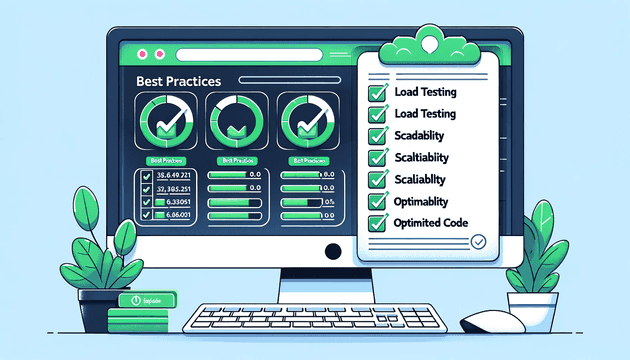In the fast-paced world of software development, ensuring that your application performs flawlessly under varying workloads and conditions is crucial. This is where performance testing comes into play. Performance testing involves evaluating the speed, responsiveness, stability, and scalability of your software to ensure it meets user expectations. To achieve this, incorporating the best practices in performance testing is essential. In this blog post, we will delve into the key strategies and approaches that can help you master software performance testing for optimal results.
1. Early Integration of Performance Testing:
One of the most effective approaches is to integrate performance testing early in the software development lifecycle. This helps in identifying performance bottlenecks and issues at an early stage, making it easier and less expensive to address them. By conducting performance tests in the early stages, you can proactively design and code your application to meet performance requirements.
2. Define Clear Performance Goals:
Start with a clear understanding of your performance goals. Define key performance indicators (KPIs) that align with your application's purpose. These KPIs could include response time, throughput, resource utilization, and user load. Establishing measurable goals ensures that your testing efforts are focused and meaningful.
3. Realistic Test Environment:
Create a test environment that closely mirrors your production environment. This includes hardware, software, network configurations, and databases. An accurate test environment helps in predicting real-world performance accurately.
4. Load Testing:
Load testing involves simulating various user loads to assess the system's response. Start by identifying the expected user base and simulate a gradual increase in load until you reach the desired threshold. This helps identify performance bottlenecks and assess the system's capacity to handle different levels of load.
5. Stress Testing:
Stress testing pushes the system beyond its normal operating conditions to determine its breaking point. This can involve sudden spikes in user load, resource exhaustion, or unfavorable scenarios. Stress testing helps you understand the system's behavior under extreme conditions and helps in identifying failure points and potential risks.
6. Scalability Testing:
Scalability testing assesses how well your application can handle increased load by adding more resources. This is crucial for applications that are expected to grow over time. Horizontal (adding more servers) and vertical (increasing server resources) scalability should both be evaluated.
7. Performance Profiling and Monitoring:
Utilize performance profiling tools to identify performance bottlenecks in your code. Monitor various system metrics during testing to gain insights into resource utilization, database performance, network latency, and more. This continuous monitoring helps in identifying issues in real-time and optimizing the application accordingly.
8. Automate Testing:
Automation is essential for executing performance tests consistently and efficiently. Automation tools can simulate user interactions, generate various load scenarios, and analyze results. This not only saves time but also ensures repeatability and accuracy in your testing.
9. Test Data Management:
Use realistic and diverse test data that mimics real-world scenarios. This ensures that your performance tests are representative of actual usage patterns and can uncover hidden issues related to data processing and storage.
10. Continuous Performance Testing:
Performance testing is not a one-time event. Implement continuous performance testing as part of your continuous integration/continuous delivery (CI/CD) pipeline. This helps in detecting performance regressions early and ensures that improvements made in the codebase do not negatively impact performance.
Conclusion
In the competitive landscape of software development, performance can make or break user satisfaction and application success. By following these best practices in performance testing, you can identify issues, optimize performance, and provide users with a seamless experience. Early integration, clear goals, realistic environments, and a comprehensive testing approach are all vital components of a successful performance testing strategy. Remember, investing in performance testing today can lead to significant benefits in terms of user retention, customer loyalty, and overall business success.
